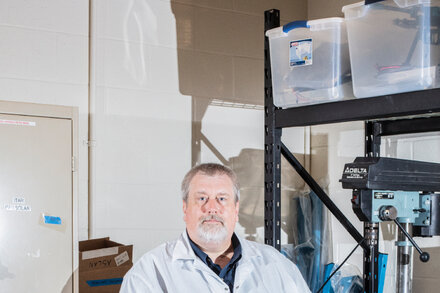A team at Caltech has successfully concluded groundbreaking tests on a new Variable Field Propulsion (VFP) drive. This innovative system promises to revolutionize deep-space travel by drastically reducing mission times across our solar system and beyond.

PASADENA, CA – Dr. Aris Thorne and his research team at the California Institute of Technology (Caltech) have successfully concluded a series of groundbreaking tests on a new propulsion system poised to revolutionize deep-space travel. The experiments, conducted in the lab’s advanced vacuum facilities, demonstrated the viability of a “Variable Field Propulsion (VFP) drive,” a technology that could drastically reduce travel times for future missions across our solar system and beyond.
The project, primarily funded by the National Science Foundation (NSF), focused on a novel approach to generating and harnessing high-energy plasma for thrust. Unlike conventional ion engines, the VFP drive reportedly achieves significantly higher specific impulse while maintaining substantial thrust levels, a critical balance for efficient long-duration spaceflight.
“We’ve been working on this concept for over a decade, and to see it perform as simulated, even exceed expectations in some parameters, is incredibly gratifying,” said Dr. Thorne, lead researcher and Professor of Applied Physics at Caltech. “This isn’t just an incremental improvement; it’s a fundamental shift in how we can think about moving through space. Imagine cutting travel time to Mars by a third, or reaching the outer planets in years rather than decades.”
Advancing Interplanetary Capabilities
The VFP drive utilizes a sophisticated magnetic confinement system to accelerate plasma generated from inert gases. During the recent test phase, researchers demonstrated the engine’s ability to maintain stable operation for extended periods under extreme simulated space conditions, achieving efficiencies previously thought unattainable in a practical engine design. Data collected from the tests suggest the VFP drive could enable faster, more fuel-efficient journeys, opening new windows for human and robotic exploration.
Experts believe this technology could be a game-changer for planned missions to Europa or Titan, where current propulsion methods make round trips prohibitively long and complex. Faster transit times would not only reduce astronaut exposure to radiation but also lower mission costs by decreasing the amount of consumables and resources needed for lengthy voyages.
“The National Science Foundation is proud to support foundational research like Dr. Thorne’s, which pushes the boundaries of scientific possibility,” commented Dr. Evelyn Reed, Director of NSF’s Division of Astronomical Sciences. “Investments in cutting-edge propulsion systems are vital for our nation’s leadership in space exploration and for inspiring the next generation of scientists and engineers. Caltech’s results are a testament to the power of sustained scientific inquiry.”
Future Outlook and Applications
Following the successful lab tests, the next phase of the project involves scaling up the VFP drive for potential space-based validation. While a full-scale flight model is still several years away, preliminary discussions are reportedly underway with aerospace partners and space agencies regarding potential orbital demonstration missions. The immediate focus will be on further refining the system’s power requirements and ensuring its long-term durability in the harsh environment of space.
The implications of this technology extend beyond faster travel. Enhanced propulsion efficiency could also facilitate the deployment of larger scientific payloads, support the establishment of lunar or Martian bases, and even pave the way for humanity’s first interstellar probes, fundamentally altering our relationship with the cosmos.
Source: Read the original article here.





